NUKE NEWZ
Norwegian town initiates nuclear plant zoning work
15 April 2024
The municipality of Heim in Trøndelag county, Norway, has announced the start of regulatory work for creating a zone for the construction of a nuclear power plant and the cancellation of previous plans for the zone.
.jpg?ext=.jpg) The proposed location for the plant (Image: Norsk Kjernekraft)
The proposed location for the plant (Image: Norsk Kjernekraft)Among the recipients of the notification are the Directorate for Radiation Protection and Nuclear Safety (DSA), the Norwegian Armed Forces, the Norwegian Water and Energy Directorate (NVE), grid operator Statnett and the Environment Agency.
"The regulatory plan will lay the foundation for the establishment of nuclear power plants, preferably in the form of small modular reactors (SMRs)," the municipality said.
The notification refers to a proposal submitted by Norsk Kjernekraft on 2 November last year to Norway's Ministry of Oil and Energy (OED) for an assessment into the construction of a power plant based on multiple SMRs in the municipalities of Aure and Heim.
According to the preliminary plan, the plant will be located in a common industrial area in the border area between Aure and Heim. Other areas in the municipalities may also be relevant, Norsk Kjernekraft noted. The plant is planned to consist of several SMRs, which together will produce around 12.5 TWh of electricity annually, if the plant is realised in its entirety. This corresponds to an increase in Norway's power production of about 8%.
"In accordance with Sections 12-8 and 12-14 of the Planning and Building Act, the commencement of work is notified at the same time as the cancellation of the current zoning plans in the area," the municipality said. "Taftøy industrial park is the name of an older development plan located on Taftøyan, northwest of Heim municipality. To the west, the planning area borders Aure municipality in Møre and Romsdal county. To the north, the planning area borders the former 680 [road]. About 300 metres east of the planning area is the zoning plan for the Taftøyan cottage area."
It added: "The older regulatory plans have not been realised and will be repealed when the area plan for the Taftøy nuclear power is adopted."
The deadline for any responses to Heim's notification is 15 May.
"Planned measures are covered by regulations on impact assessments and must have a planning programme and an impact assessment," the municipality noted. "The need for investigation for such a regulatory plan is currently uncertain, but will probably be clarified when the investigation programme that Norsk Kjernekraft sent to OED is confirmed. Proposals for the planning programme will be submitted for consultation and put out for public inspection when the need for a study for nuclear power plants is clear."
Norsk Kjernekraft aims to build, own and operate SMR power plants in Norway in collaboration with power-intensive industry. It says it will prepare licence applications in accordance with national regulations and international standards.
"Heim and Aure municipalities are leaning forward to provide enough reliable power for industry and residents," said Norsk Kjernekraft CEO Jonny Hesthammer. "They are stepping up to the plate to get nuclear power in place as part of the solution together with renewables. In this way, security of supply is ensured, while the need for natural interventions can be reduced.
"Together with the two municipalities, Norsk Kjernekraft has submitted a report on the study programme to the Ministry of Energy. Now the municipalities are showing with action that they are serious, and the government and the ministries must take this on board. What we need now is precisely action, and no more delays."
Fuel loading to start at Kashiwazaki-Kariwa unit
15 April 2024
Tokyo Electric Power Company (Tepco) plans to begin loading fuel into unit 7 of the Kashiwazaki-Kariwa nuclear power plant in Niigata Prefecture following approval by Japan's Nuclear Regulation Authority. It is not yet known when the reactor will be restarted.
.jpg?ext=.jpg) The Kashiwazaki-Kariwa plant (Image: Tepco)
The Kashiwazaki-Kariwa plant (Image: Tepco)
"We received approval for the test use of safety equipment to confirm the soundness of the equipment," the utility said. "From now on, we will carry out fuel loading and subsequent pre-use operator inspections to confirm the integrity of the equipment."
Tepco said it was starting the fuel loading process from around 16:00 (local time) on Monday, ahead of the unit's potential restart.
Additional regulatory inspections will still be required before Kashiwazaki-Kariwa 7 - which has been offline since August 2011 - can resume operation. In addition, consent must also be sought from the local governor. Although the central government has been seeking Niigata Governor Hideyo Hanazumi's approval for the restart, he has yet to announce whether he will give his consent.
Tepco applied for Nuclear Regulation Authority (NRA) approval of its design and construction plan for Kashiwazaki-Kariwa units 6 and 7 in September 2013. It submitted information on safety upgrades across the site and at those two units. These 1356 MWe Advanced Boiling Water Reactors began commercial operation in 1996 and 1997 and were the first Japanese boiling water reactors to be put forward for restart.
In 2017, Tepco received permission from the NRA to restart units 6 and 7.
However, in early 2021, Tepco notified the NRA of malfunctions in intruder detection equipment on the Kashiwazaki-Kariwa site. In addition, it reported the unauthorised use of an ID card. In April 2021, the NRA issued an administrative order to Tepco prohibiting it from moving nuclear fuel at the plant until improvements in security measures there have been confirmed by additional inspections. This order was lifted in December last year after inspections confirmed that measures had been enhanced at the site.
Although it has completed work at the other idled units at Kashiwazaki-Kariwa, Tepco is concentrating its resources on units 6 and 7 while it deals with the clean-up at Fukushima Daiichi. Restarting those two units - which have been offline for periodic inspections since March 2012 and August 2011, respectively - would increase the company's earnings by an estimated JPY100 billion (USD706 million) per year.
Eletronuclear responds to report on Angra 3 costs
15 April 2024
Brazil's Eletronuclear has highlighted the economic benefits of investing in completing the Angra 3 nuclear unit, and stressed that an official study has yet to be completed into the likely final tariff paid by customers.
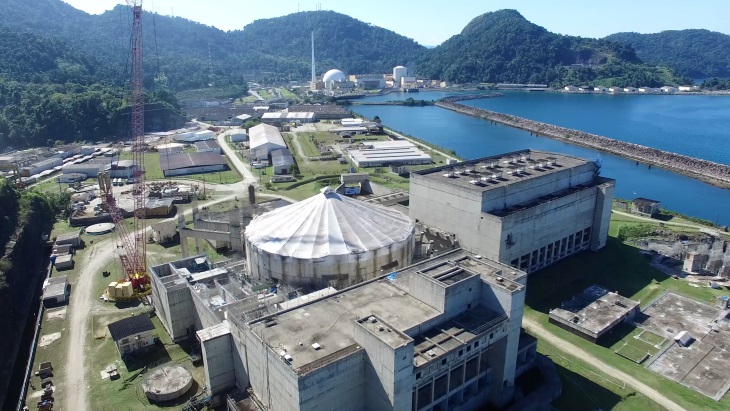 The Angra site (Image: Eletronuclear)
The Angra site (Image: Eletronuclear)
Last week the Federal Audit Court (TCU) published an analysis of aspects of the project to complete the nuclear power unit whose construction originally began in the 1980s before being halted.
According to the TCU analysis of tariff calculations, the price charged for its eventual output "will not respect the principle ... that the tariffs charged for public services are reasonable and accessible to the population". It adds that "regardless of potential positive externalities of the enterprise for national nuclear policy, the charges to consumers will be much higher if the construction of Angra 3 continues than if the project is abandoned".
The TCU said that when the National Energy Policy Council (CNPE) makes its choice "it must justify its full decision in detail" and also "consider the costs of eventual abandonment of the work".
The TCU describes itself as "the external control institution of the federal government that supports the National Congress with the mission of overseeing the budget and the financial execution of the country and contributing to the improvement of public administration for the benefit of society".
In response to the TCU statement, Eletronuclear has said that the estimate of the higher cost than other energy generation options was based on what was a preliminary presentation in the past by the Brazilian Development Bank (BNDES) and the actual suggested price of electricity for Angra 3 would not emerge until a full study by BNDES is completed.
"Only after the completion of the independent studies, carried out by BNDES," will it be possible to assess the impacts of the Angra 3 project on the national electrical system. "Eletronuclear informs everyone that it works day in and day out so that operational, financial and construction efficiencies are duly appropriated, always for the benefit of Brazilian consumers for low tariffs. Furthermore, tax aspects may contribute to the fall in the value of the final tariff for the consumer," the company said.
Eletronuclear's statement added "the price of electrical energy produced by Angra 3 will certainly be competitive for a clean, non-polluting (not producing greenhouse gases), safe, reliable, constant" power source. It added that a recent study suggested that for every BRL1 billion (USD194 million) invested in the nuclear generation sector, BRL3.1 billion is generated in the production chain, generating 22,500 jobs in Brazil, 17,500 of which in the State of Rio de Janeiro.
Eletronuclear is currently holding a month-long public consultation on the tender to complete the works at Angra 3.
Brazil has two reactors - Angra 1 and Angra 2 - which generate about 3% of the country’s electricity. Work on the Angra 3 project - to feature a Siemens/KWU 1405 MW pressurised water reactor - began in 1984 but was suspended two years later, before construction began. The scheme was resurrected in 2006, with first concrete in 2010. But, amid a corruption probe into government contracts, construction of the unit was halted for a second time in 2015, when it was 65% complete. It resumed again in November 2022 - at the time of the project’s revitalisation, Eletronuclear’s aim at that time was to start operations by the end of 2026. However, work has again faced interruptions pending agreement with local authorities on "socio-environmental" compensation payments.
Brazil also began a process to identify sites for new nuclear power plants in 2022 - its National Energy Plan to 2050 said the country aims to add 10 GW of nuclear capacity in the next 30 years.
Work under way for first Westinghouse AP1000 in Ukraine
15 April 2024
Energoatom and Westinghouse's CEOs, Ukraine's Minister of Energy and the US ambassador have gathered at an event to mark the start of the project to build unit 5 at the Khmelnitsky nuclear power plant.
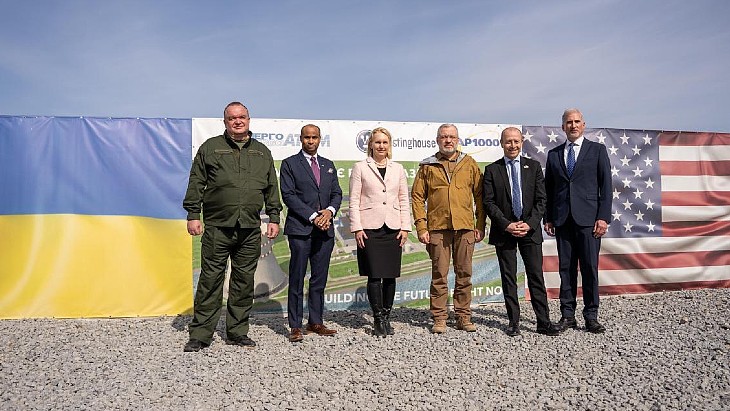 (Image: Energoatom)
(Image: Energoatom)
They oversaw the first bit of concrete being laid as part of concreting of the drainage channel. The new unit will be the first of a planned fleet of Westinghouse AP1000 reactors in Ukraine.
Energy Minister Herman Halushchenko said: "This is a major geopolitical project of common interest for Ukraine and the United States. The technologies that we will build and develop together will push Russians out of the European nuclear energy market ... through cooperation in the construction of a new type of reactor for Europe."
Energoatom CEO Petro Kotin said: "Westinghouse is our reliable strategic partner: both in the development and loading of alternative fuel into the VVER reactors, and in the creation of a fuel production line in Ukraine and in the construction of new power units ... during the war, we have not stopped, but on the contrary deepened and accelerated our cooperation."
He said that once the two new units - 5 and 6 - at Khmelnitsky were built, and units 3 and 4 commissioned, the plant's power capacity would exceed that of the six-unit Zaporizhzhia nuclear power plant and "will be the largest nuclear power plant in Europe".
Westinghouse Electric Company's President and CEO Patrick Fragman said: "We are opening a new stage, a new milestone in the cooperation between Westinghouse and Energoatom ... Ukraine will get energy that is clean, affordable and with the use of economically feasible technologies. This project will also create many jobs during construction, operation, repairs and maintenance."
US Ambassador to Ukraine Bridget Brink said Ukraine needed more power facilities, especially with its current infrastructure being targeted by regular shelling: "I welcome the efforts and desire of the Government of Ukraine and the Ministry of Energy, Energoatom in the direction of the development of nuclear power industry. These units at the Khmelnitsky NPP will be the first of nine using AP1000 technology, which are planned to be built in Ukraine together with Westinghouse."
Ukraine has 15 nuclear units which could generate about half of its electricity, including the six at the Zaporizhzhia nuclear power plant which has been under Russian military control since early March 2022.
Khmelnitsky's first reactor was connected to the grid in 1987, but work on three other reactors was halted in 1990, at a time when unit 3 was 75% complete. Work on the second reactor restarted and it was connected to the grid in 2004 but units 3 and 4 remain uncompleted. Last week, the Ukrainian Cabinet put forward a draft law on the construction/completion of units 3 and 4. Halushchenko said earlier this year that unit 3 could come into operation in as little as two and a half years.
Further Japanese research reactor free of HEU
12 April 2024
All remaining highly enriched uranium (HEU) from the Japan Atomic Energy Agency's (JAEA's) Japan Materials Testing Reactor Critical Assembly has now been returned to the USA. Japan and the USA have been cooperating for many years to repatriate HEU from Japanese research reactors to the USA.
.jpg?ext=.jpg) The announcement of the HEU transfer was welcomed by Prime Minister Kishida and President Biden (Image: The White House)
The announcement of the HEU transfer was welcomed by Prime Minister Kishida and President Biden (Image: The White House)
The Japan Materials Testing Reactor Critical Assembly (JMTRC) was built in 1965 in advance of operation of the adjacent Japan Materials Testing Reactor (JMTR). It was used to perform various critical experiments to collect data on characteristics of the JMTR core and in-core irradiation facilities.
The majority of the facility's HEU was repatriated to the USA between 2003 and 2009 following its decommissioning in 1996.
In December 2023, the US Department of Energy National Nuclear Security Administration (NNSA), Japan's Ministry of Education, Culture, Sports, Science and Technology (MEXT) and JAEA transported the remaining HEU from the JMTRC to the USA.
The Y-12 National Security Complex in Oak Ridge, Tennessee, provided US technical support for the project and received the HEU upon its arrival in the USA. The HEU will be downblended to low-enriched uranium and/or dispositioned, permanently reducing the risk it could be used to produce an improvised nuclear device.
The removal of all the HEU from the JMTRC was welcomed by US President Joe Biden and Japanese Prime Minister Fumio Kishida when they met in Washington, DC, on 10 April. During the meeting, they confirmed further advance cooperation in strengthening global nuclear non-proliferation and nuclear security.
The removal of the JMTRC HEU fulfills a commitment made by NNSA Administrator Jill Hruby and MEXT former Deputy Minister Yanagi Takashi in November 2021 and was completed more than two years ahead of schedule through the financial support of the Defense Threat Reduction Agency.
"This most recent removal highlights the shared commitment of the United States and Japan to minimise highly enriched uranium and the close partnership between our countries,” said Corey Hinderstein, Deputy Administrator for Defense Nuclear Non-proliferation. "The Defense Threat Reduction Agency helped our teams achieve this milestone years earlier than would have otherwise been possible."
In May 2022, NNSA announced that more than 30 kilograms of HEU had been removed from three Japanese research sites and sent to the USA for downblending or disposal. In an operation taking four years to complete, all the HEU was removed from the University of Tokyo's Yayoi research reactor and JAEA's Deuterium Critical Assembly and Japan Research Reactor 4. The shipment of the HEU to the USA was completed in March of that year.
Since then, all HEU has been removed from the Kyoto University Critical Assembly and there has been a commitment to convert the Kindai University Teaching and Research Reactor - Japan's last remaining HEU-fueled research reactor - to high-assay low-enriched uranium (HALEU) and to remove its remaining HEU to the USA.
NNSA's Office of Material Management and Minimization works with partner countries and international institutions around the world to eliminate the need for, presence of, or production of weapons-usable nuclear material. To date, the office has worked jointly with domestic and international partners and successfully converted or verified as shut down 109 research reactors and medical isotope production facilities and removed or confirmed the disposition of over 7340 kilograms of weapons-usable nuclear material - enough for approximately 328 nuclear weapons.
Final Zaporizhzhia unit being switched to cold shutdown
12 April 2024
International Atomic Energy Agency staff at the Zaporizhzhia nuclear power plant report that they have been told unit 4 is being transferred to cold shutdown - making it the sixth and last unit to do so.
.jpeg?ext=.jpeg) (Image: Energoatom)
(Image: Energoatom)
The International Atomic Energy Agency (IAEA) Director General Rafael Mariano Grossi has been urging the Russian operators of the occupied plant to put all its units into cold shutdown, as part of efforts to minimise risks to nuclear safety and security.
In a message posted on its Telegram channel, the plant operators announced that on Friday at 07:00 local time, "specialists began cooling down the N4 power unit. The process is organised in accordance with all necessary norms and regulations. The work is progressing normally".
The plant, which has been under Russian military control since early March 2022, stopped generating electricity in September 2022 but has kept one of its units in 'hot shutdown' to provide heating for the plant and the nearby town of Energodar, as well as for process steam for liquid waste treatment at the site.
Earlier this year four diesel steam generators were installed to handle the waste requirements, and the decision to move the unit into cold shutdown follows the official end of the winter heating season at Energodar. The advantage of cold shutdown is, the IAEA says, "there is an additional response margin of several days before the cooling of the nuclear fuel in the reactor might be challenged" and it also requires less cooling water.
Grossi said: "Switching to cold shutdown is a positive step for nuclear safety and security, although one that is currently overshadowed by the great military dangers facing the plant."
The director general was speaking as the IAEA's Board of Governors held an extraordinary meeting following the drone attacks on and around the plant over the past few days, which he said was the first time it had been directly targeted since November 2022.
Grossi, who is to address the United Nations Security Council on Monday, said the events of the past weeks had breached the five principles for nuclear safety and security agreed by the UN Security Council last May. These included that there should be no attack on, or from, a nuclear power plant.
He told the meeting: "As I have repeatedly stated - including at the Security Council and the IAEA Board of Governors - no one can conceivably benefit or gain any military or political advantage from attacks against nuclear facilities. Attacking a nuclear power plant is an absolute no-go ... Sunday’s attack fortunately did not compromise nuclear safety in a serious way, but it would be irresponsible for us to assume future attacks will not. Rolling the dice is not the way to do it in nuclear safety."
He added: "I urge you to make this your highest priority and to support me and the IAEA in doing everything in your power to stop this devastating war becoming unconscionably more dangerous through further attacks on the Zaporizhzhia NPP or any other nuclear power plant."
In his update, Grossi said that the IAEA experts stationed at the Zaporizhzhia plant visited the main control rooms of all six units, the off-site radiation monitoring laboratory and the radioactive waste storage facility but were not granted access to parts of unit 2's turbine hall or some parts of the waste facility.
"In these extremely challenging circumstances, the presence of IAEA experts ... is more important than ever. Their impartial and technical work enables us to inform the world about events there in an independent and timely manner. In order to carry out these crucial tasks, they need prompt and unrestricted access to all areas that are important for nuclear safety and security," Grossi said.
He said that the IAEA teams stationed at the Khmelnitsky, Rivne and South Ukraine nuclear power plants and the Chernobyl site report that nuclear safety and security is being maintained "despite multiple air raid alarms that occurred over the past week".
The Russian operators of the plant said that representatives of Russia's nuclear regulator Rostechnadzor had visited Zaporizhzhia unit 4 this week "and checked its readiness for cooling down". They also reported that "work is under way ... to prepare for extending the operating life of power units and certifying personnel".
Licence issued to test BREST-OD-300 nuclear fuel module
12 April 2024
Russian nuclear regulator Rostechnadzor has issued a licence which will allow the production of mock-ups of fuel assemblies with depleted uranium for the BREST-OD-300 fast neutron reactor.
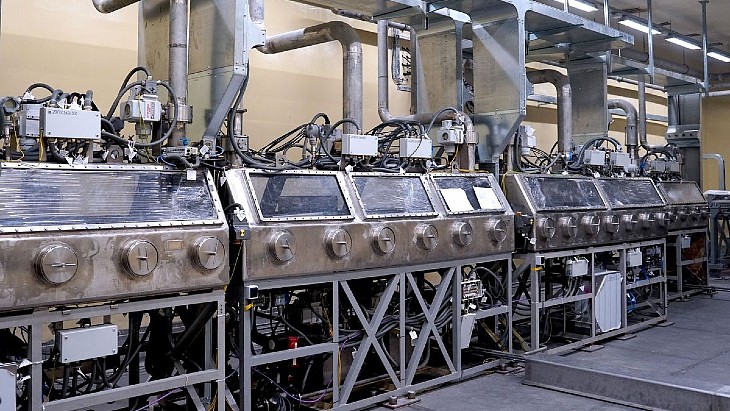 (Image: Rosatom)
(Image: Rosatom)
The lead-cooled BREST-OD-300 reactor is part of Rosatom's Proryv, or Breakthrough, project to enable a closed nuclear fuel cycle. The 300 MWe unit will be the main facility of the Pilot Demonstration Energy Complex (PDEC) at the Siberian Chemical Combine site. The complex will demonstrate an on-site closed nuclear fuel cycle with a facility for the fabrication/re-fabrication of mixed uranium-plutonium nitride nuclear fuel, as well as a used fuel reprocessing facility.
Rosatom and its TVEL fuel division said that the licence gives the go-ahead for Siberian Chemical Combine to test the entire production process. It says that the fuel developed for the BREST-OD-300 reactor is a mixed dense nitride uranium-plutonium fuel (MNUP) based on depleted uranium - a by-product of uranium enrichment for nuclear reactors - and plutonium extracted from irradiated nuclear fuel.
The MNUP fuel cannot be produced using standard technology and equipment and the process needs to be as automated as possible because of the use of radioactive plutonium extracted from used nuclear fuel. According to Rosatom "four production lines will be used - a line for the carbothermal synthesis of mixed uranium and plutonium nitrides, a line for the production of fuel pellets, a fuel rod assembly line, as well as a production line for complete fuel cassettes. Currently, commissioning of installed equipment is under way on the production lines".
The fuel fabrication/refabrication unit is the first of the PDEC facilities to be commissioned, with all the works scheduled to be completed by the end of 2024. TVEL said that "at the next stage, after obtaining the appropriate permission from Rostechnadzor to handle plutonium" the equipment will be used to directly produce MNUP fuel.
At a ceremony to launch testing of equipment, held during the recent AtomExpo 2024 event, Rosatom Director General Alexei Likhachev said: "Everything at this facility is unique - the technology itself, each piece of equipment, its layout, and each production site is a solution to a technological problem that no one else in the world has ever taken on."
The plan is that the use of secondary products will expand the resource base of the nuclear power industry "multifold" and reduce the volumes of radioactive waste. In January the steel reactor base plate and the lower tier of the containment for the BEST-OD-300 was installed - the target is for it to start operation in 2026.
According to the World Nuclear Association information paper on fast neutron reactors, "the BREST fast neutron reactor, of 700 MWt, 300 MWe has lead as the primary coolant, at 540°C, and supercritical steam generators. It is inherently safe and uses a mixed uranium and plutonium nitride fuel... no weapons-grade plutonium can be produced, since there is no uranium blanket - all the breeding occurs in the core ... fuel cycle is quoted at 5-6 years with partial refuelling at about 10 months. The initial cores can comprise plutonium and used fuel - hence loaded with fission products, and radiologically 'hot'. Subsequently, any surplus plutonium, which is not in pure form, can be used as the cores of new reactors. Used fuel can be recycled indefinitely, with onsite facilities. The nitride fuel has been successfully tested in the BN-600 reactor to a burn-up of 7.4%".
Initial operation of the demonstration unit will be focused on performance and after 10 years or so it will be commercially oriented. The plan has been that if it is successful as a 300 MWe unit, a 1200 MWe (2800 MWt) version will follow - the BR-1200.
Waste transfer milestone at Scottish plant
12 April 2024
The retrieval has been completed of more than 2100 tonnes of solid intermediate-level radioactive waste from five above-ground concrete bunkers at the Hunterston A Magnox nuclear power plant in Scotland. The project began 20 years ago.
.jpg?ext=.jpg) The final box of solid ILW being sealed (Image: NRS)
The final box of solid ILW being sealed (Image: NRS)
Hunterston A - a twin Magnox reactor site - is 30 miles south west of Glasgow and was Scotland's first civil nuclear generating station. The plant, opened in 1964, ceased operations in 1989 after generating a total of 73 TWh of electricity.
Intermediate-level waste (ILW) was transported from the plant via underground tunnels and stored in one of five above-ground concrete bunkers that were constructed on site between the 1960s and 1980s. This waste consists of contaminated metallic components, debris removed from used fuel elements and 30,000 fuel element graphite sleeves.
Nuclear Restoration Services (NRS) - which is responsible for safely decommissioning the first generation nuclear and research sites across the UK - said the Hunterston A site holds the largest inventory of solid ILW across all its sites.
.png) Creating an opening into bunker three through a 2.4m thick concrete wall (Image: NRS)
Creating an opening into bunker three through a 2.4m thick concrete wall (Image: NRS)
NRS noted that ILW becomes a site's highest radiological hazard once all the used fuel has been removed. Defueling of Hunterston A was completed in 1995. NRS said this waste is often located in hard-to-reach areas, making the task of retrieving it "a complicated business requiring, in some cases, many years of engineering work before it can begin in earnest".
The Solid Active Waste Bunker Retrieval (SAWBR) project was established to retrieve the ILW from the bunkers at Hunterston A.
The initial breakthrough of the first bunker was conducted manually in 2014 using core drills and wire saws to remove an 800mm-deep concrete slab. Then a remotely-operated vehicle broke through the remaining 400mm depth to create the first full opening.
.png) A remotely operated vehicle removing waste (Image: NRS)
A remotely operated vehicle removing waste (Image: NRS)
Remotely operated vehicles were used to recover the waste to a purpose-built facility constructed on the side elevation of the bunker. The waste was then loaded into three-metre-cube-size stainless steel boxes. The filled boxes were then transported to the site's ILW store pending future encapsulation at the solid intermediate level waste encapsulation (SILWE) facility before being returned to the ILW store for long-term storage.
NRS has now announced that the final box of solid ILW has been sealed.
"This is a fantastic achievement which has safely and compliantly reduced one of the most significant hazards on site," said Hunterston A Site Director Mark Blackley. "Over 85% of the ILW inventory has now been retrieved. This is a tremendous testament to everyone who has been involved in or who has supported this project. The remaining 15% of ILW inventory are residual sludges from the spent fuel storage ponds and acids. These are in the process of being recovered and treated."
Stuart Blair, Waste Operations Manager at Hunterston A, added: "The process to empty the bunkers has not been without its challenges. The team has overcome many technical challenges throughout, employing operational experience and innovation to progress the waste recoveries safely and efficiently.
"This represents a major milestone for the entire site with all colleagues across functions and departments playing a key role in supporting this achievement. Most of the team that has completed this work has been involved since day one of retrievals which makes the achievement especially satisfying. With safe and sustainable decommissioning, the process takes decades to complete, so I am also mindful of former colleagues who have contributed significantly over the course of the 20 years since the recovery concept was born."
Researched and written by World Nuclear News
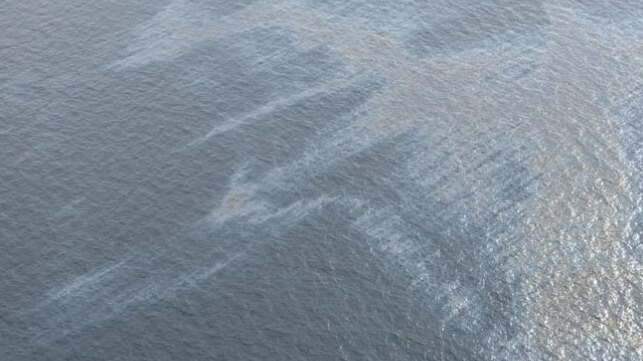
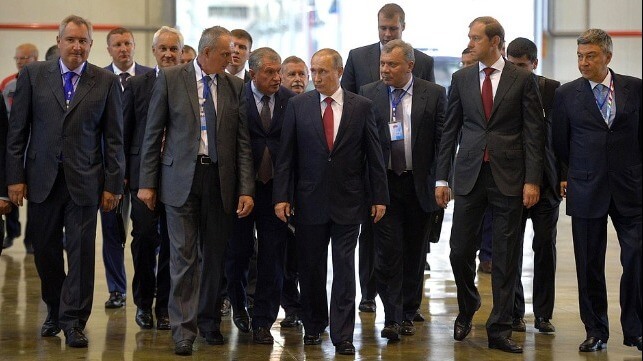


.jpg?ext=.jpg) The proposed location for the plant (Image: Norsk Kjernekraft)
The proposed location for the plant (Image: Norsk Kjernekraft).jpg?ext=.jpg) The Kashiwazaki-Kariwa plant (Image: Tepco)
The Kashiwazaki-Kariwa plant (Image: Tepco) The Angra site (Image: Eletronuclear)
The Angra site (Image: Eletronuclear) (Image: Energoatom)
(Image: Energoatom).jpg?ext=.jpg) The announcement of the HEU transfer was welcomed by Prime Minister Kishida and President Biden (Image: The White House)
The announcement of the HEU transfer was welcomed by Prime Minister Kishida and President Biden (Image: The White House).jpeg?ext=.jpeg) (Image: Energoatom)
(Image: Energoatom) (Image: Rosatom)
(Image: Rosatom).jpg?ext=.jpg) The final box of solid ILW being sealed (Image: NRS)
The final box of solid ILW being sealed (Image: NRS).png) Creating an opening into bunker three through a 2.4m thick concrete wall (Image: NRS)
Creating an opening into bunker three through a 2.4m thick concrete wall (Image: NRS).png) A remotely operated vehicle removing waste (Image: NRS)
A remotely operated vehicle removing waste (Image: NRS)